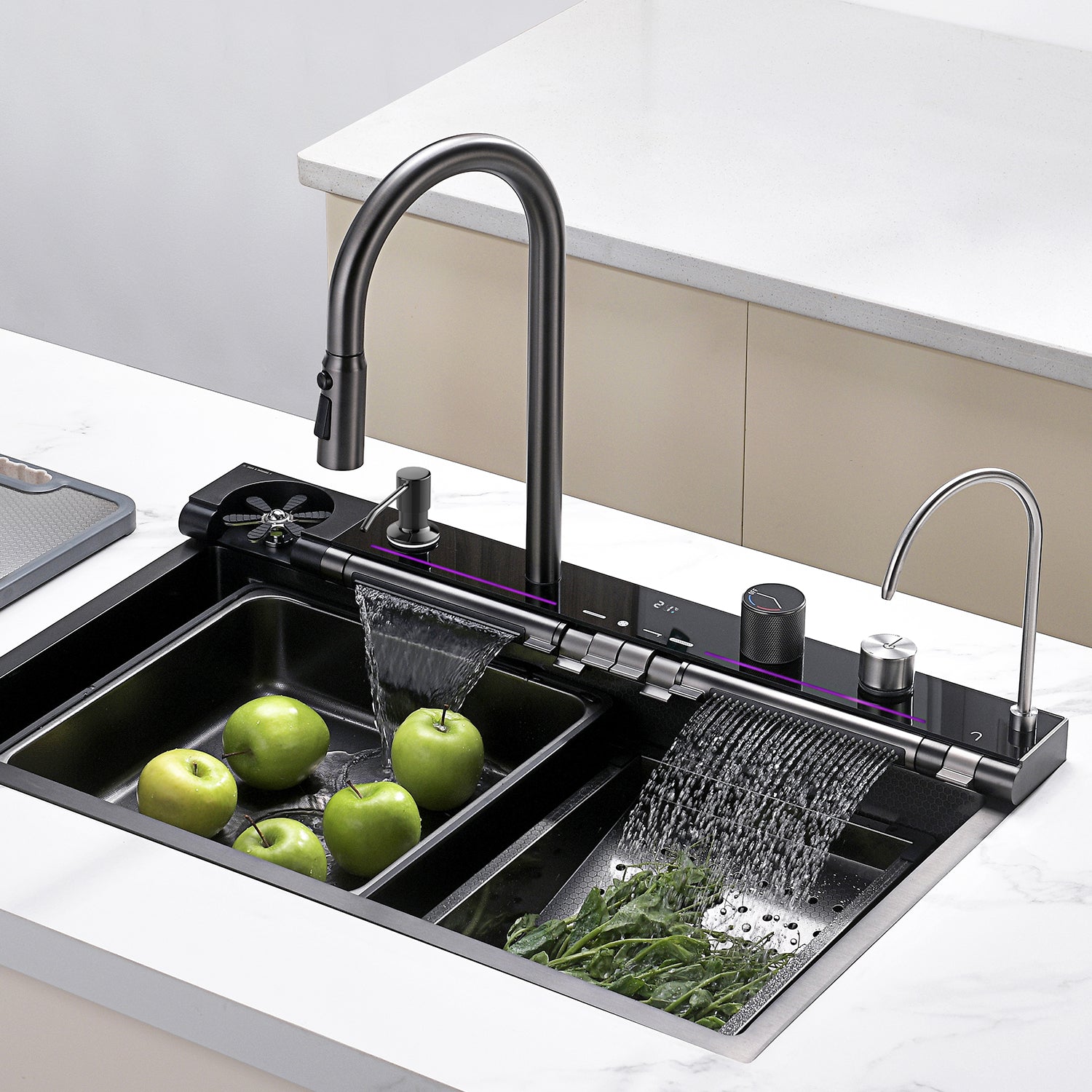Why Is My Bathroom Faucet Dripping?
A dripping bathroom sink faucet can be traced to several common causes. Let’s explore the most frequent offenders and how to tackle them.
Damaged O-Ring
The O-ring is another component that can cause leaks. If it’s damaged or loose, water can seep out, leading to that persistent drip.
- Symptoms: Dripping around the handle area.
- Solution: Replace the O-ring. Again, turn off the water supply, take apart the faucet, and install a new O-ring.
Corroded Valve Seat
The valve seat connects the faucet to the spout. Corrosion can occur over time, especially if you have hard water, causing leaks around the spout area.
- Symptoms: Dripping from the spout even when the faucet is off.
- Solution: Clean or replace the valve seat. Use a valve seat wrench to remove and inspect it. If it’s beyond cleaning, a replacement is necessary.
Loose Parts
Faucets have numerous small parts that can become loose over time, leading to leaks. These can include the packing nut or adjusting ring.
- Symptoms:Inconsistent dripping or water leaking from different parts of the faucet.
- Solution: Tighten the loose parts. A wrench or screwdriver should do the trick.
High Water Pressure
While high water pressure might seem like a good thing, it can actually cause your faucet to leak. Excessive pressure can prevent the faucet from shutting off completely.
- Symptoms: Dripping occurs at specific times, such as at night when water usage is lower.
- Solution:Adjust the water pressure. You may need to install a pressure regulator if the issue persists.

Step-by-Step Guide to Fixing a Dripping Faucet
Feeling handy? Here’s a step-by-step guide to fixing your dripping faucet. Remember, safety first: always turn off the water supply before starting any repairs.
Gather Your Tools
- Screwdriver
- Wrench
- Replacement parts (washer, O-ring, valve seat)
- Plumber’s tape
- Cleaning materials (vinegar, brush)
Step 1: Turn Off the Water Supply
Locate the shut-off valves under your sink and turn them off. This prevents water from gushing out when you dismantle the faucet.
Step 2: Plug the Drain
Use a sink plug or a rag to block the drain. This ensures you don’t lose any small parts down the drain.
Step 3: Dismantle the Faucet
Using your tools, carefully remove the handle and other components. Keep track of the order in which you remove them to make reassembly easier.
Related reading: How to Remove a Bathroom Faucet Handle
Step 4: Inspect and Replace Parts
Examine the washer, O-ring, and valve seat for wear and tear. Replace any damaged parts. Clean any corrosion or build-up from the valve seat with vinegar.
Step 5: Reassemble the Faucet
Carefully put the faucet back together in the reverse order you dismantled it. Make sure all parts are tightened securely but not over-tightened.
Step 6: Turn the Water Supply Back On
Slowly turn the water supply back on and test the faucet. The drip should be gone! If not, you may need to consult a professional plumber.

Frequently Asked Questions (FAQs)
Why is my bathroom faucet dripping even after I replaced the washer?
If replacing the washer didn’t stop the drip, other components like the O-ring or valve seat might be the issue. Double-check these parts and replace them if necessary.
Can a dripping faucet increase my water bill?
Absolutely! A slow drip can waste gallons of water over time, leading to a higher water bill. Fixing the drip promptly can save you money and conserve water.
Is it better to repair or replace a dripping faucet?
It depends on the severity of the issue and the age of the faucet. Minor repairs are usually sufficient, but if the faucet is old or damaged extensively, replacement might be more cost-effective.
How can I prevent my bathroom faucet from dripping in the future?
Regular maintenance can help prevent leaks. Check and replace washers, O-rings, and other small parts periodically. Also, ensure your water pressure is not too high.
When should I call a professional plumber?
If you’ve tried the DIY fixes and the faucet still drips, or if you’re uncomfortable performing the repairs, it’s best to call a professional. They can diagnose and fix the issue efficiently.
Conclusion
A dripping bathroom faucet is more than just an annoyance – it’s a potential water waster and a sign of underlying issues. By understanding the common causes and following the steps to fix them, you can restore your faucet to its drip-free glory. Whether it’s a worn-out washer, a damaged O-ring, or high water pressure, knowing why your bathroom faucet is dripping and how to address it can save you time, money, and frustration. So, grab your tools, roll up your sleeves, and tackle that drip head-on! And remember, when in doubt, don’t hesitate to call in the pros.





Leave a comment